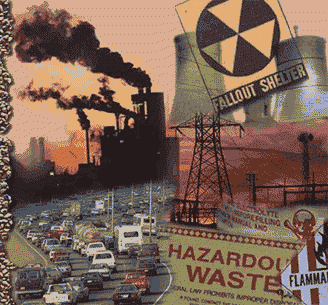Environmental Justice
Environmental Justice ..... What does that mean?
"Environmental Justice" is the fair treatment and meaningful involvement of all people regardless of race, color, national origin, or income with respect to the development, implementation, and enforcement of environmental laws, regulations, and policies.
But what does that really mean? Let's break it down and see:
The environment refers to everything around you. It is your home, your, school, and where you play. And if you have a job, it’s also refers to where you work. It includes your friends' and grandparents' homes, and any other places that you visit. It includes the lake where you might swim or fish, the places where your food is grown or prepared, and even the places your drinking water travels through on its way to your home.
Justice means fair treatment—fair treatment for everyone!
So Environmental Justice is a new term that simply means making sure that everyone has a fair chance of living the healthiest life possible.
The opportunity to have a healthy life often depends on where someone lives, plays, and works—yes, it depends on their environment! So it is important that ALL environments are free of unhealthy materials. Unhealthy materials can cause illness and sometimes even death. So Environmental Justice specifically refers to being sure that everyone has a fair chance of finding housing, employment, and a good education, all in a safe and protected environment.
Where are these unhealthy environments?
They can be anywhere where steps have not been taken to remove the dangers. For example, some homes are unhealthy environments. There are people who still have to live in places with dangerous levels of lead. Many years ago, lead was used in paint, and more recently lead was used in gasoline products. So in some places it might still be present in the old paint used on the walls or even on old painted furniture. Lead can make children sick and interfere with their ability to learn.
Another unhealthy environment would be homes or schools where there are certain insects, such as roaches, or other animals (mice, rats, etc.) that may leave droppings. Animal droppings can increase asthma attacks in persons who already have asthma, and they can actually cause asthma in others. Visit our "Dust Game" (produced by the Baylor College of Medicine under a grant from NIEHS) to learn more about this.
Another unhealthy environment could be a playground that is near a chemical plant or a waste disposal site, or land that was previously the site of a gas station. If you play near such areas you may come in contact with hazardous substances that are still stored in the area, or that have seeped into the soil or water. Or you could be exposed to toxic (poisonous) gases released in the air from local plants or factories, large and small. And you've probably heard of the dangers of chemical spills, or of chemical wastes being improperly dumped in an area, exposing the people who live nearby and contaminating our water sources.
Employees of companies dealing with unhealthy materials are also at risk, since there are many things in the workplace that are hazardous to human health. For example, the people who work in chemical factories must be protected from exposures to the chemicals they produce or handle. And people who work in coal mines have to be protected from inhaling "soot," which causes black lung disease.
Even farming can involve exposure to environmental contaminants, such as insecticides or fertilizers. And animal production facilities (like poultry or hog farms) can adversely affect our environment if not managed properly.
Work in seemingly health-conscious environments, like hospitals, may place employees at risk too. For example, although X-rays are important tools for helping people identify their illnesses (learn more about X-rays), people who work with X-rays may be harmed if they are not protected when using these machines. They either step behind a shield or wear protective coverings to prevent exposures. Have you ever been to the dentist and had your teeth X-rayed? Then probably you remember that they put a heavy apron over your body during the process. The apron was there to protect you from any unnecessary exposure to the X-rays.
So what can be done about this?
The fact is that many racial and ethnic minorities and poor people have to live, work and play in environments that cause them to be sick. Because they do not have the ability to move to other areas or change jobs, they often remain exposed to harmful materials for long periods of time, and suffer from a variety of illnesses.
This isn't fair, is it? I'm sure you agree that everyone should feel safe where they live, play, go to school, and work! Since something obviously needed to be done, as early as the 1970's an Environmental Justice movement was begun. Many community organizers and many people who were sick due to unhealthy environments, led efforts to bring attention to the fact that some people were sharing an unequal portion of illness because of where they lived, worked and played. But even with those efforts, little could be accomplished since there were no existing laws that addressed Environmental Justice issues. In 1994, in response to the continuing cries of protesters and demonstrators, President Clinton signed an Executive Order that directed the federal government to address the environmental health threats caused by people having to live, play and work in unhealthy environments.
There is a federal agency called the National Institute of Environmental Health Sciences (NIEHS), National Institutes of Health, Department of Health and Human Services, that is dedicated to doing much of the research to identify environmental agents that cause illnesses and death.
The information developed by NIEHS laboratories and NIEHS-supported research laboratories around the country is then used by the Environmental Protection Agency (EPA) to develop laws that will help promote healthy environments. Many people think that NIEHS and EPA are the same organization, but they are not. Both are involved with the "environment", but they have very different missions—in general, it is the responsibility of the EPA to make and enforce laws that promote healthy environments. To do this properly, NIEHS and other similar research organizations must first identify appropriate environmental concerns.









